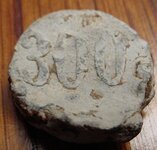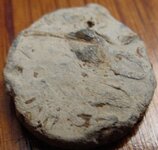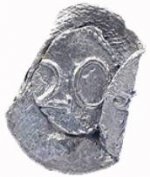M
MattinMO
Guest
Hello! Found this whatsit in a field that was supposed to have gypsies living on it years ago. It is lead, dime size in diameter and about 5/16" thick. The one side is clearly marked "300". The other side looks as though it may have a "300" on the bottom and possibly some more writing. This field also produce a 1907 barber half on the same hunt. I am interested to get some info on this one. Thanks guys!




 I agree more cleaning would be helpful. Burdie
I agree more cleaning would be helpful. Burdie

